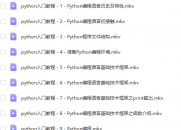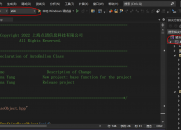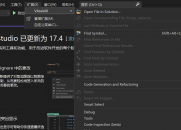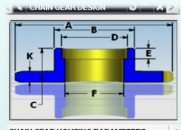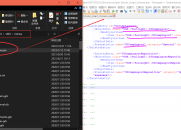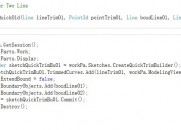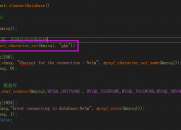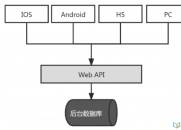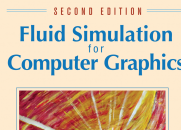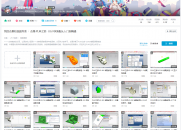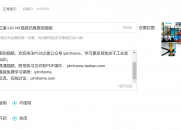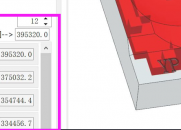|
|
请使用QQ关联注册PLM之家,学习更多关于内容,更多精彩原创视频供你学习!
您需要 登录 才可以下载或查看,没有账号?注册

x
Manufacturing Process Management allows you to manage manufacturing
4 e, Y* j# b2 F+ V8 ] P; }planning and execution, using information generated in the design stage.
- J- a3 H+ V; tThe manufacturing planning model includes several interrelated process and2 a9 z$ j7 p1 v B: z( O
operation types, as follows:
: i, v# ?( d K4 \7 r2 F/ o) C& n
" B+ n9 G' Z# C* Z `, G% OManufacturing process
# P* u; l+ N6 w/ J# _6 fA set of manufacturing process operations and other manufacturing
2 T* W; I2 X' } C: `* d) xprocesses that are closely related to each other. It is a mechanism to group8 @3 M' ]4 `7 H
operations into logical groups. It also maintains constraints on the order
+ M6 ?# d( r9 N( R9 Z1 ?6 Y3 |. }% Mof execution between subprocesses and process operations.8 B R; p9 b4 r: ]
The process structure is the model of the complete manufacturing plan,# C5 O- O6 y) t5 O; C" Z- i8 Q6 x' B
and describes how and where the product is manufactured. It contains
* R8 V% ?6 S. ?' e! X+ Rinformation about which plant structure elements are used and where.
5 `( m9 b- S+ Y5 }It establishes links between the product, plant layout, and the resources1 R5 ? A/ Y9 Z# p0 P
necessary to produce the product.
2 I* |. \, ^! O# [Operations and resources can be shared by several processes. You can
' l8 c" w* H" c( E0 k2 V+ d5 T7 Odefine multiple views of a process to allow for different manufacturing
2 w r) L C( C/ d) nrequirements.9 y& x) n8 q) \9 B+ O
You can also vary the generic bill of process (BOP) by defining and
- d: n' ^6 ~6 f/ H! o! R/ D9 F' t, Zapplying variant or revision rules.& ? K- i {9 W- F) g
2 ~, L4 C0 {. }. BProcess operation+ X8 A& v; P/ I% V1 Y; y N
A process operation represents one controlled step in the process and& o8 C! E0 C* ?# V" J9 C. W
contains the work done in one work area; technically, it is a leaf node7 h2 i( g. H6 x
in the process structure. Optionally, you can break a process operation
" J* U. v7 {7 [4 g1 _into steps called activities. Examples of process operations include an
: @* j0 G/ Y. C( tNC machining operation on a single machine tool and an operation to6 B, y) b. Z( Z3 }
assemble several components into a structure.% A3 |$ O( L M' ^8 z
4 ~! j; o/ g5 r2 L. U/ L q+ n9 _Operation activities" S% f% t% c# t ^8 O) Q1 `+ p
A breakdown of manufacturing process operations into activities, each
7 ?: t4 f/ ]# F8 q2 O2 P3 [with an associated start time and duration. The total time of an operation
' t8 C" h5 t; ^2 A& n5 Yis calculated from the start time and duration of each activity.
; e! C6 U$ M3 A1 u; E" A9 S2 y
( O$ s7 U% g: h& L7 LWorkstation
8 C9 I7 x* G, u1 @1 I R0 jA unique location within the factory to which you can assign3 k9 b( b0 j4 J) p
manufacturing operations, for example, a paint spraying booth.
! z: b) I/ T8 w/ t% u$ U" c
7 e, ]2 w5 ^, E; qPlant4 l9 n% {8 `- a
A manufacturing facility in which operations and processes are executed.
7 T. S) l! K& _5 \The plant structure is hierarchical structure of work areas of the factory, h7 I. z- S& z" b0 j- {; }5 U' A. L0 ^+ y
in which the product is manufactured. Its definition is independent of, but: x7 S4 H( j. n$ ] S: M' k3 r4 B
related to, the manufacturing processes that are performed in it./ Q W2 `$ b. [- i) q! N
+ v. p2 A* u: O2 k1 f3 r2 o
$ y% g' i ]5 y
Work area8 ~3 f) o# m' _' k
Any element in the plant structure such as a factory, line, section, work
7 a7 F+ m$ [0 f1 e9 scell, or station. Typically, a work area is assigned to one process operation.9 R6 n6 Z' _) W6 s& ^
A work area is defined by a location on the shop floor and the process
' ?% r/ w6 n( ?' z1 x# gcapability it provides.
8 E0 ^% ~2 M% q$ _' R; eTo group resources further, your organization may define a hierarchy of& u& E, L5 d& y& T8 T
work areas. For example, a plant may include a welding line, a lathe8 f/ f. S& z" W7 a
workstation, a milling workstation, and an inspection workstation. The. |5 h8 Z7 O4 T7 z5 y% l0 t
welding line may contain a welding workstation and a welding work cell.7 @) U0 ?4 I- j @9 S+ B
You configure each work area with standard equipment, and you can9 N2 Q$ c# [! J- g( s' P7 i
further configure equipment that is needed to execute a specific process
/ c0 p% f6 ^* |operation. The process designer tries to use as much standard equipment2 a/ @2 u4 Y# ^1 `, S4 n! w4 n5 b! i9 t
in the work area as possible. If additional equipment is needed, the" H$ P* ~3 r, j" Y' \
process designer provides work instructions on how to configure the work
" c) \' l" _6 X$ G" G# T- e9 M7 Z9 yarea with the additional equipment. For example, an NC machining8 E( j) k8 b/ L
center may be pre-loaded with standard tools that are commonly used on C. e$ e1 n3 }5 ]9 [1 ?- p
the machine. If a process operation requires tools that are not pre-loaded,
. ` L5 s9 L% h* }0 l% Z& `the operator loads them on the machine when the particular process
" M% F9 e0 b1 F5 ], G) J1 }8 Aoperation is executed.
; v( ?/ _, M$ L x6 U) a6 ]- H1 o% w& e; A! w# W/ M3 P. m8 \
Product structure
. I, t' F6 ?% ^+ w) eThe product structure defines the as-designed product. It is created by
- `% l# m8 Z# T* Jthe design engineers in a CAD system such as NX® and managed by
0 r/ p3 R4 ]0 F! _6 |7 rTeamcenter. Manufacturing Process Management allows you to take the2 h* y S/ n p, L4 g+ A
as-designed product structure, create alternative manufacturing views of+ n# {4 J1 D/ `9 T! O* K# b
the product and attach process definitions as necessary. (Optionally, the: ^- D$ A6 m' h5 l8 ]
product structure may contain definitions of manufacturing features.)0 [: Z' F$ B% K) _9 V
- W' G, U5 {" c# W& LOperation setup* E& n: I) h" p/ u( t; _7 a
The model of an operation-specific configuration of an environment in
, _. R4 f; O8 U' ~( Uwhich processes and operations are executed. It describes how consumed2 J+ {" u+ c! g, E5 A
items, resources, and a standard work area are utilized to perform an& h7 l* \# F( h9 C7 x0 J2 R
operation.$ h, Y$ d+ H3 m: v0 h, D
$ \/ `/ W# R- p! { L3 l
Consumed items
1 P( ?' _: ^; U, C# n3 l4 {& ^$ KComponents in the product definition that are consumed by a
4 r# U' a7 u! o4 ^) tmanufacturing operation.7 Z& L Z9 m. g$ \- X, I
: |( M& s; ?8 J
Consumed material
5 ^4 ]" B, w% b8 BItems that are consumed by a manufacturing operation but are not part of6 f3 o- U( N0 r! |. l
the product definition, for example, glue or paint.$ A e4 p; W) _6 _1 S" e
$ D; S$ Y* t0 w3 h! ]7 p. }4 |& JRaw material0 r1 z, ?' T7 A) e# x
The initial in-process model before any manufacturing operation is
7 n$ b& ^9 h: C) G1 Hperformed.' E) R2 G7 {& a* |6 p. ~
4 f9 o5 J' a. e3 P& J; n/ d8 CIn-process model
# o* w0 o: j: k1 J6 g' MThe state of the product at some stage in the manufacturing process2 X% ?" X5 q# i! b
after an operation is executed. The raw material is the initial in-process
- h5 R0 Q% K% O7 v* _model for the first process operation in the manufacturing process. Any
5 D$ C" f6 h! Msubsequent in-process model is created by attaching a work instruction to
: q8 `. S. g7 V% Q: H' {the in-process model.
6 L8 `- y( z3 ?0 j, p1 x% Y
" \& @/ o& _& `) m/ y" @6 YResource
/ [5 Q) N* V/ h, I, D' z6 G8 xThe equipment needed for the execution of manufacturing processes, and
+ [3 N9 V! m1 u8 Xmay include machine tools, robots, and weld guns. A single resource can9 f5 f; V. Y, {( W" v4 ~7 h- i' q: ]. _
be used in several operations and processes.
' \2 F3 a1 V' U9 G3 x' q6 e
+ c8 S- j1 o/ D Z& n: H/ MWork instructions6 M/ C9 g! _; P- R) [
Documents that describe how work should be performed. A work }, H0 r# B' `+ g6 Q8 o
instruction documents the procedure by which an operator should perform
, {1 T( G# J2 ^- Y7 Man activity. Instructions may be printable or accessed from a Web page.4 x. t$ Y4 w6 D4 b1 g) p1 C
Manufacturing Process Management allows you to create and manage work instructions in many of the applications. You can also create& S5 Y4 p, M$ e1 ?' B
templates to ensure work instructions appear in a standard format.
5 i7 m( Y/ ~- ?% X5 E8 `1 B( y5 N7 B+ [& @9 i6 f# ~& H
Manufacturing feature8 x7 T4 {6 q4 g5 J4 j
A set of entities and parameters that define generic manufacturing data.
e/ D' n B& W; K# u8 vFor example, a weld point and its normal location comprise a feature that E) H% b G) }4 R Y
describes where two points may be welded together. All such features0 E8 D0 C5 i& |, T7 V: Q
should be associated with a process.
! m) y5 ~. A0 I, o; D+ k2 W4 o* c; {; n' L0 O; U
|
|
